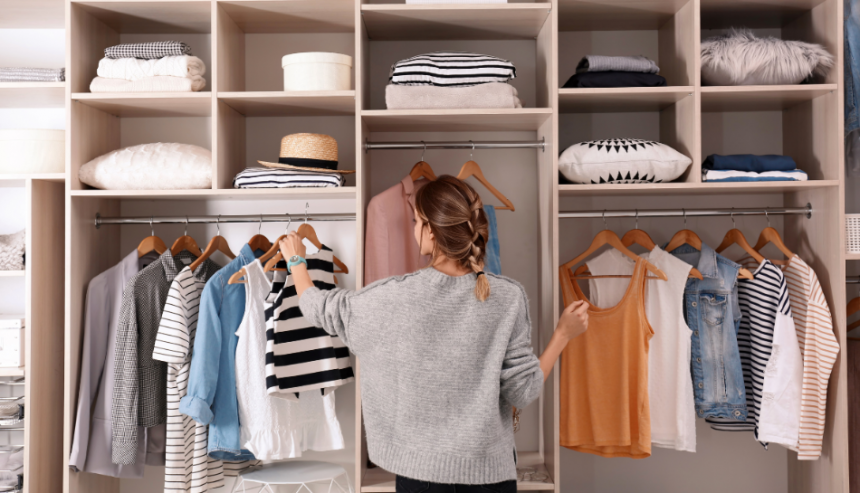Mold Growing in Closet Remediation Tips
Are you faced with a disheartening discovery of mold in your closet? Whether it’s a musty smell, unsightly patches, or the telltale signs of mold spores, dealing with mold growth in your closet can be an unwelcome and challenging task. However, fear not!
In this blog post, we’ll delve into the causes of mold in closets and explore effective strategies for treating and preventing its recurrence. Say goodbye to the moldy woes and hello to a fresh, mold-free wardrobe space!
Where does mold in closet come from?
Mold in closets can stem from a variety of sources, and understanding these origins is crucial in effectively combating its growth. Here are some common culprits:
- Poor ventilation: Closets, especially those without proper ventilation, can trap moisture from the air, creating an ideal environment for mold to thrive. Lack of airflow allows moisture to accumulate, promoting mold growth on clothing, walls, and other surfaces.
- High humidity: Humidity levels play a significant role in mold development. If your home’s humidity levels are consistently high, whether due to climate, inadequate ventilation, or water leaks, it can contribute to mold growth in closets.
- Leaking pipes or roof: Water leaks from pipes or a damaged roof can introduce moisture into your home, including your closet space. Even small leaks over time can create the damp conditions necessary for mold to flourish.
- Damp clothing or items: Storing damp or wet clothing, shoes, or other items in the closet can introduce moisture, providing a breeding ground for mold spores. Make sure items are completely dry before storing them away.
- Condensation: Cold surfaces within closets, such as exterior walls or windows, can attract condensation when warm, moist air comes into contact with them. This moisture can lead to mold growth if not adequately addressed.
How Do You Know If You Have Mold In Your Closet?
Signs of Mold Growing in Your Closet
Detecting mold in your closet may not always be straightforward, as it can often lurk out of sight. However, several telltale signs can indicate the presence of mold growth:
- Musty odor: One of the most common signs of mold is a musty or earthy smell. If you notice an unpleasant odor when opening your closet door, it could be indicative of mold growth.
- Visible mold: Inspect the walls, corners, ceiling, and any stored items in your closet for visible signs of mold. Mold often appears as black, green, or brown patches, but it can also be white or yellowish in color.
- Discoloration: Mold growth can cause discoloration on surfaces such as walls, clothing, shoes, or other stored items. Look for any patches of discoloration that may indicate mold contamination.
- Moisture or water damage: Excessive moisture or water damage in your closet can create the perfect conditions for mold growth. Check for water stains, dampness, or signs of leaks from pipes, roofs, or windows.
- Condensation: If you frequently notice condensation on closet surfaces, especially during humid weather or when the closet door is closed, it could indicate elevated moisture levels conducive to mold growth.
- Allergic reactions: Mold spores can trigger allergic reactions in some individuals. If you or your family members experience unexplained allergic symptoms such as sneezing, coughing, itching, or respiratory issues when accessing your closet, it may be due to mold exposure.
- Rotting or decaying materials: Mold feeds on organic materials like wood, paper, and fabric. Check for any signs of rotting or decay on wooden shelves, clothing, or other organic items stored in your closet.
If you suspect mold growth in your closet based on these signs, it’s essential to take prompt action to address the issue and prevent further spread. Ignoring mold can lead to property damage, health problems, and persistent musty odors throughout your home.
Mold Growing in Closet Remediation Tips
How Do You Get Rid Of Mold In Closets?
Removing mold from closets requires a systematic approach to ensure thorough eradication and prevent its return. Here’s a step-by-step guide on how to get rid of mold in closets effectively:
- Safety first: Before tackling mold removal, ensure your safety by wearing protective gear such as gloves, a mask, and goggles to prevent exposure to mold spores and cleaning agents.
- Ventilate the area: Open windows and doors to promote airflow and ventilation in the closet. This helps reduce moisture levels and prevent the spread of mold spores to other areas of your home.
- Remove items: Take out all items from the closet, including clothing, shoes, shelves, and other belongings. Inspect each item for mold growth and set aside any contaminated items for cleaning or disposal.
- Scrub surfaces: Using a mixture of water and detergent or a commercial mold cleaner, scrub all closet surfaces thoroughly to remove mold spores and stains. Focus on areas with visible mold growth, including walls, shelves, floors, and corners. Use a stiff brush or sponge to scrub effectively.
- Disinfect surfaces: After scrubbing, disinfect the closet surfaces with a solution of water and either bleach or vinegar. Both bleach and vinegar are effective at killing mold spores. Allow the disinfectant to sit for 10-15 minutes before rinsing with clean water.
- Dry thoroughly: Once the closet surfaces are cleaned and disinfected, ensure thorough drying to prevent moisture buildup. Use fans, dehumidifiers, or natural ventilation to expedite the drying process. Consider leaving the closet door open for continued airflow.
- Inspect and repair: Inspect the closet for any underlying issues contributing to mold growth, such as leaks, moisture buildup, or poor ventilation. Repair any water leaks, improve ventilation, and address humidity issues to prevent mold from returning.
- Clean and dry items: Clean and dry all items removed from the closet before returning them. Wash clothing, wipe down shoes and other non-porous items with a damp cloth, and thoroughly dry everything to prevent mold recurrence.
- Preventative measures: Implement preventative measures to keep mold at bay in the future. This may include using moisture absorbers or desiccants, installing a dehumidifier, using closet organizers to improve airflow, and regularly inspecting for signs of mold growth.
How to Prevent Mold in Closets?
To prevent mold growth in closets:
- Ensure good ventilation and airflow by keeping doors and vents open.
- Control humidity levels with a dehumidifier and aim for indoor humidity between 30% and 50%.
- Regularly check for and repair any water leaks or sources of moisture.
- Use moisture-absorbing materials like silica gel packs or activated charcoal.
- Keep the closet clean, organized, and free of damp items.
- Consider using mold-resistant materials in closet construction or renovation.
- Schedule regular inspections to detect mold growth or moisture issues early.
- Allow natural sunlight into the closet when possible, as sunlight inhibits mold growth.
By following these steps, you can effectively prevent mold from taking hold in your closet and maintain a clean, mold-free storage space for your belongings.
Call Us for Mold Remediation in New Jersey – (877) 750-7876
If you suspect mold in your New Jersey home, it’s always best to reach out to a professional who can test your air and determine if mold is present. Besides an unpleasant smell, mold can cause health and home problems.
If you do find mold or notice any signs of possible growth, call PuroClean Emergency Recovery Services New Jersey at (877) 750-7876 for 24/7 emergency service! Our technicians are trained to handle your mold problem with care and compassion.
In conclusion, preventing mold growth in closets requires a proactive approach to managing moisture and maintaining a clean environment. By ensuring good ventilation, controlling humidity levels, regularly inspecting for leaks, using moisture-absorbing materials, and keeping the closet clean and organized, you can significantly reduce the risk of mold taking hold.
Additionally, utilizing mold-resistant materials and allowing natural sunlight into the space can further inhibit mold growth. By implementing these preventative measures and staying vigilant, you can enjoy a clean and mold-free closet, protecting both your belongings and your home’s indoor air quality. Remember, early detection and action are key to preventing mold problems before they escalate. So, take the necessary steps to safeguard your closet and enjoy a fresh, mold-free storage space for years to come.




 PuroClean Emergency Recovery Services
PuroClean Emergency Recovery Services